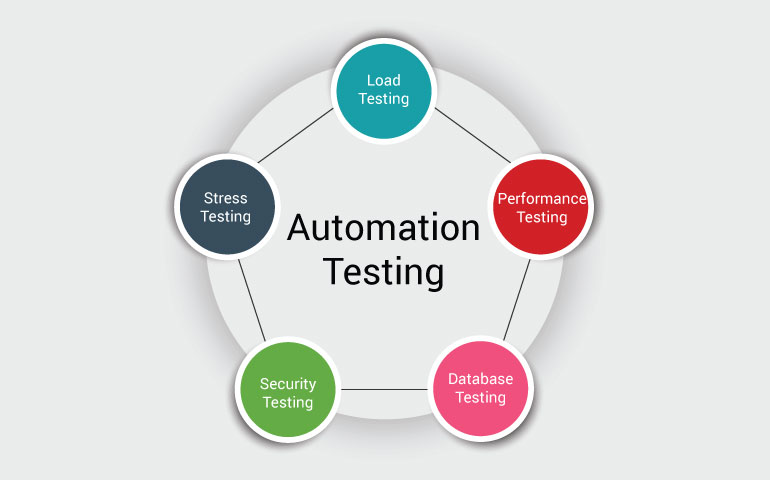The Relevance of Automation Testing in Agile Growth Settings
The Relevance of Automation Testing in Agile Growth Settings
Blog Article
From Handbook to Automated Screening: A Comprehensive Overview to Transitioning Efficiently and Effectively
In the realm of software testing, the change from guidebook to automated procedures has actually become a significantly crucial transition for companies seeking to improve efficiency and precision in their testing methods. The journey from guidebook to automated testing is not without its obstacles, but when come close to strategically and with a clear strategy in mind, the benefits can be significant.
Benefits of Automated Testing
Automated screening provides numerous benefits, enhancing performance and accuracy in software program advancement processes. One main benefit is the substantial decrease in testing time. Automated examinations can be run all at once on several devices and operating systems, dramatically accelerating the screening phase contrasted to hands-on testing. This boosted efficiency enables faster feedback on the top quality of the software, making it possible for programmers to determine and address concerns without delay.
Additionally, automated testing makes sure a greater level of accuracy in spotting problems. Since automated examinations adhere to predefined scripts, human mistake is reduced, bring about more trusted test outcomes. Consistency in testing is also boosted, as automated examinations execute the exact same actions precisely each time they are run. This consistency is vital in ensuring that all performances of the software application are extensively tested, decreasing the probability of unseen insects sliding via to production.
Selecting the Right Devices

First of all, analyze your purposes and needs. Recognize the scope of your job, the innovations entailed, and the capability of your team. This analysis will aid you determine the features and capabilities you require in your screening devices.
Second of all, think about the compatibility of the devices with your existing systems and procedures. Smooth assimilation with your existing software development lifecycle is vital to make certain a smooth change to automation.
Furthermore, review the scalability and adaptability of the tools. As your testing needs evolve, the tools ought to be able to adjust and suit changes successfully.
Finally, element in the support and community around the tools. Durable assistance and an energetic customer area can provide valuable sources and help when carrying out automated testing. By thoroughly thinking about these elements, you can select the right devices that line up with your requirements and set the phase for an effective shift to automated screening.
Composing Efficient Test Scripts

When crafting examination manuscripts, it is necessary to think about the particular requirements of the software program being checked and make sure that the scripts attend to all crucial performances. Detailed and clear naming conventions for test manuscripts and test instances can enhance readability and maintainability. In addition, incorporating mistake handling mechanisms within the examination scripts can aid in determining and resolving problems promptly.
In addition, arranging test manuscripts right into modular elements can boost reusability and scalability, lowering redundancy and enhancing effectiveness in test manuscript upkeep. Routine evaluations and updates to evaluate manuscripts are crucial to equal evolving software application requirements and functionalities. By complying with these concepts, testers can create reliable and durable test scripts that contribute significantly to the success of automated testing procedures.
Integrating Automation Into Workflows
Effective assimilation of automation devices right into existing operations streamlines processes and improves performance within software program development straight from the source cycles. When incorporating automation into workflows, it is important to determine repeated jobs that can be automated to conserve time and minimize human mistake. By effortlessly incorporating automated screening devices like Selenium or Appium right into the software application advancement lifecycle, teams can attain faster responses on code adjustments, bring about quicker insect detection and resolution. This integration allows for continuous screening throughout the growth process, guaranteeing that any issues are recognized early on, causing greater software application high quality. Additionally, automation can be used to cause tests immediately after each code commit, giving prompt validation and freeing up testers to concentrate on even more complicated scenarios. Correct combination of automation tools calls for cooperation in between development, screening, and procedures groups to establish a unified operations that maximizes effectiveness and efficiency in delivering premium software application products.
Guaranteeing a Smooth Change
Successfully transitioning to automated screening entails careful planning and mindful execution to decrease interruptions and make the most of efficiency in the software program growth procedure - automation testing. To guarantee a smooth change, it is necessary to start by performing a detailed assessment of the present testing procedures and recognizing areas where automation can bring one of the most substantial benefits. Involving with all stakeholders at an early stage at the same time, consisting of developers, testers, and job managers, is important for gathering support and buy-in for the automation effort
Interaction is key during this shift phase. Clear communication of the goals, benefits, and expectations of automated testing assists to handle any kind of resistance or issues that may develop. Furthermore, giving ample training and sources for staff member to upskill in automation tools and techniques is important for guaranteeing a successful transition.

Conclusion
In final thought, transitioning from handbook to automated screening uses countless advantages, consisting of increased efficiency and reliability. By selecting the suitable tools, writing efficient test scripts, and integrating automation perfectly into workflows, organizations can guarantee a smooth and successful transition. It is vital to accept automation as an important possession in software application testing processes to improve overall quality and productivity.
In the world of software program screening, the change from handbook to automated processes has come read this to be an increasingly vital change for companies looking for to improve efficiency and accuracy in their screening methods. Automated tests can be run concurrently on several devices and operating systems, drastically speeding up the screening stage compared to hand-operated screening. Uniformity in testing is also improved, as automated examinations carry out the very same actions exactly each time they are run.To guarantee the effective application of selected screening tools, the creation of reliable test manuscripts plays an important read the article function in validating the capability and performance of automated procedures - automation testing. By adhering to these principles, testers can develop reliable and robust test manuscripts that contribute dramatically to the success of automated testing procedures
Report this page